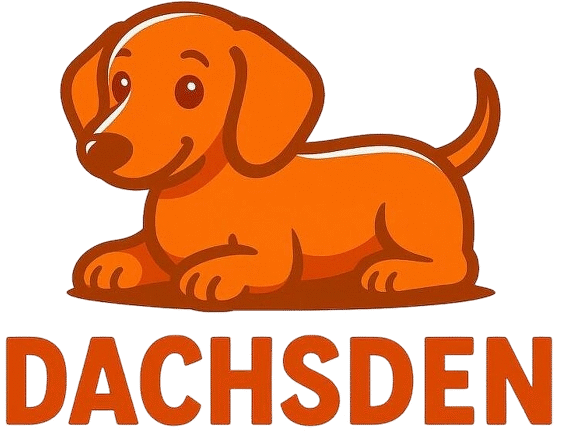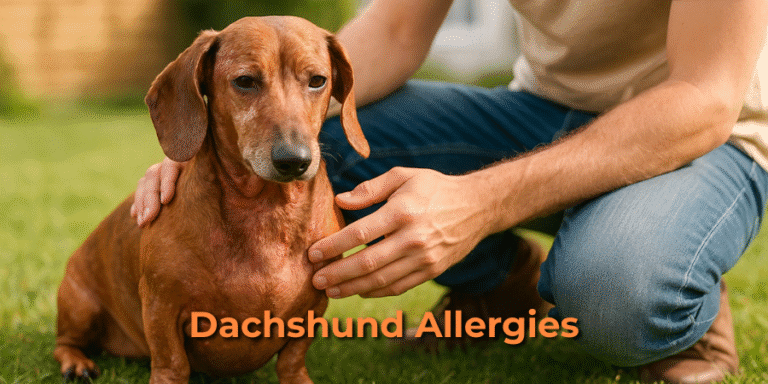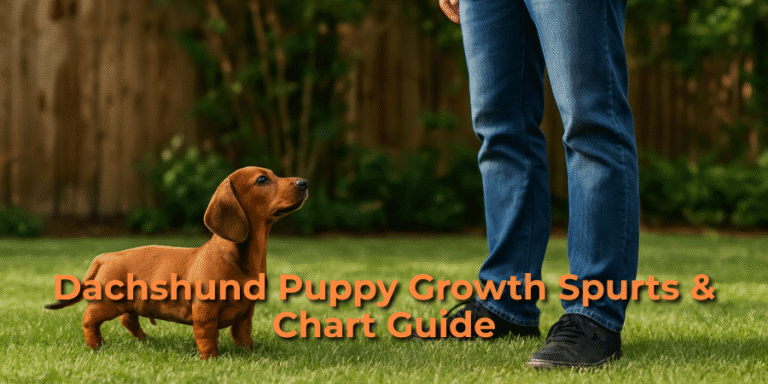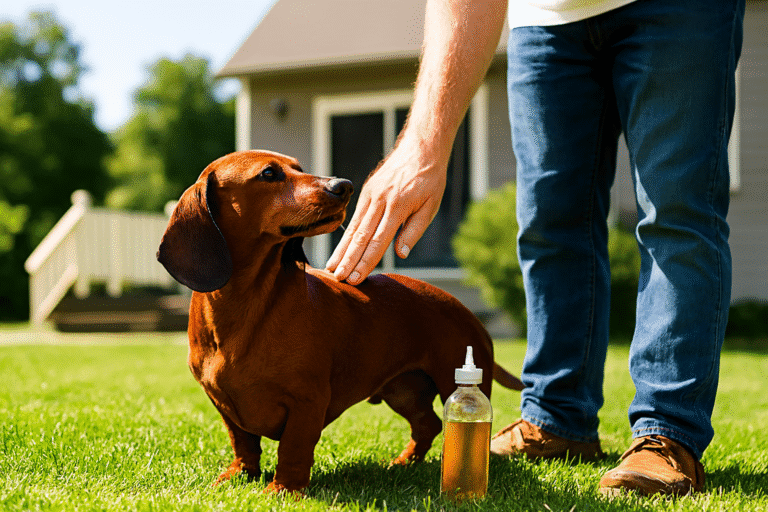Seasonal Alopecia in Dachshunds: Real Fixes That Work
If your Smooth-haired Dachshund has started losing fur in small patches, especially behind the ears, you’re not alone. This common condition, known as Seasonal alopecia, often affects many dogs during the colder months when daylight hours grow shorter. It’s most noticeable in Black and Tan coats and can be quite worrying at first.
While the thin, disappearing coat may seem alarming, it’s usually harmless and doesn’t cause discomfort. The sleek, glossy look of their coats tends to return as seasons shift. Having seen this firsthand, I’ve learned that understanding the condition makes it much easier to manage.
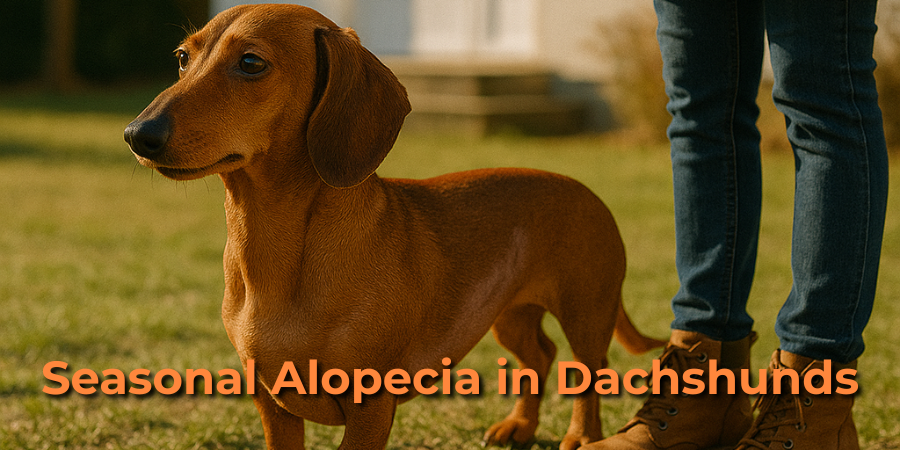
Seasonal Alopecia in Dachshunds: Real Fixes That Work – Short Answer
Seasonal alopecia in Dachshunds causes fur to thin or disappear, especially in Smooth-haired, Black and Tan types. It usually occurs during colder months with shorter daylight hours and appears behind the ears. Though it may seem alarming, it’s harmless and manageable with proper care.
1. What Is Seasonal Alopecia in Dachshunds?
Seasonal alopecia is the definition of a temporary, natural fur loss cycle many Smooth-coated Dachshunds go through. While this condition may sound worrying at first, a simple basic explanation helps ease the concern—it’s not dangerous and usually resolves on its own.
It typically appears in the colder months, mostly due to shorter daylight. This issue is most common in Black and Tan coats and usually affects areas behind the ears, where hair loss becomes clearly noticeable.
2. What Causes Seasonal Alopecia?
Seasonal alopecia happens when reduced exposure to sunlight affects hormone levels, especially melatonin. Some Sausages seem more prone to it, though the exact reason is still not fully understood. The hair loss typically appears in distinct patches rather than spreading evenly across the coat, and the skin underneath can look darker than usual.
Unlike typical shedding, this condition does not cause itching or irritation. Most dogs carry on as normal, totally unaware of the change, while owners often look for ways to improve the condition and encourage regrowth.
3. How to Recognize Seasonal Alopecia Symptoms
One of the clearest indicators of seasonal alopecia is patchy hair loss, which is not the same as even shedding. There are no signs of scratching or discomfort, making it harder to detect through behavior alone.
It’s often noticed visually without behavioral changes, so owners may spot it during grooming or petting, rather than through any visible distress from the dog.
4. Coconut Oil Massage for Skin & Follicle Stimulation
One simple and natural way to support your Dachshund’s skin and coat is by massaging coconut oil into the affected areas. Coconut oil is rich in essential fatty acids, which help keep the skin hydrated and prevent dryness. It also offers antibacterial properties, making it beneficial for rough or flaky patches.
Using a small amount, the oil can be gently rubbed into the bald patches to nourish the skin and improve circulation. Regular massages help stimulate hair follicles, encouraging regrowth over time. It’s important to use only a thin layer to avoid leaving the coat too greasy.
5. Add Salmon Oil to Your Dachshund’s Diet
A Sausage’s diet plays a big role in maintaining a strong, healthy coat. Adding salmon oil to their meals offers a boost of omega-3 fatty acids, which support skin hydration and improve overall coat condition. This simple change can reduce the severity of seasonal alopecia and promote faster hair regrowth.
Salmon oil is easy to mix into food and is often enjoyed by Dachshunds thanks to its natural fishy taste. Start with a small daily amount based on your dog’s weight to provide the right balance of nutrients. Over time, many owners notice their dog’s coat becoming shinier, softer, and more resilient.
6. Sunlight Exposure & Natural Regrowth Tips
While seasonal alopecia usually resolves on its own, there are natural ways to encourage regrowth. Regular exposure to natural sunlight can help balance melatonin levels, so spending time outdoors whenever possible may truly make a difference in recovery. If your Sausage is spending more time outside, you might also want to check this seasonal guide
A high-quality diet with essential vitamins and minerals further supports overall skin and coat health. Foods rich in protein, biotin, and omega fatty acids contribute to stronger, healthier fur. However, if hair loss becomes severe or does not improve after a few months, a vet check-up may be needed to rule out other possible causes.
7. How to Keep Your Dachshund Comfortable During Alopecia
Although seasonal alopecia doesn’t cause discomfort, it can leave the skin more exposed to colder weather. A soft jumper can help keep your Sausage warm outside, but it’s important to avoid leaving them in jumpers or collars indoors, as these might rub against the skin and affect the coat even more.
Making sure they have a cosy bed away from draughts also helps protect their skin while they rest.
8. Differentiate Between Seasonal Alopecia and Other Conditions
Seasonal alopecia is usually non-itchy and shows up as patchy hair loss, making it very unlike mange or allergies, which often involve scratching or inflammation. The absence of discomfort is a key difference that helps owners recognize it.
Sometimes, coat loss might even be linked to behavioral changes, so if you’ve noticed nervousness during storms, this piece on overcoming weather fears could be useful.
However, if the skin looks red, irritated, or flaky, it’s best to seek a vet diagnosis. Getting diagnostic clarity ensures you’re not dealing with something more serious and allows for the right care to be given early.
9. Consider Melatonin Supplements (With Vet Guidance)
In some cases, when natural remedies and environmental changes aren’t enough, melatonin may be prescribed to help normalize the hair cycle. This is a common veterinary support method, especially for dogs experiencing repeated or severe seasonal alopecia.
Melatonin works by balancing hormone levels, particularly during times when daylight exposure is reduced. However, dosage and safety should always be discussed with your veterinarian, as every dog is different. Your vet can determine the correct amount and monitor for any side effects, ensuring the treatment supports healthy regrowth without complications.
10. Track Hair Loss Patterns Annually
Alopecia may repeat in the same months every year, making it predictable once you notice the cycle. For this reason, keeping seasonal records can be incredibly useful—it helps identify patterns and allows you to time interventions early.
This small step, though often overlooked, is added to help proactive long-term care, giving you better control over your Dachshund’s coat health and reducing surprises each year.
Final Thoughts
Seasonal alopecia in Dachshunds can be unsettling at first, but with the right knowledge and care, it’s entirely manageable. From natural remedies like coconut and salmon oil to lifestyle changes and occasional veterinary support, there are real fixes that work.
By staying observant, tracking seasonal patterns, and keeping your Dachshund healthy inside and out, you can help their coat bounce back beautifully—year after year. Many Doxies also benefit from regular outdoor relaxation, as discussed in this lifestyle tip
FAQ’s
How do you treat seasonal alopecia in Dachshunds?
Seasonal flank alopecia is a purely cosmetic condition, so no treatment is necessary in most cases. If owners choose to treat for cosmetic reasons, melatonin is often used. A veterinarian can help determine the appropriate dose after ruling out other possible causes of your dog’s hair loss.
Are Dachshunds prone to alopecia?
Doxies can definitely be prone to alopecia, often seen on their chest or ears, and it’s usually harmless. However, it’s always worth checking with your vet to be safe, just to rule out any other issues.
How to prevent seasonal flank alopecia in dogs?
Flank alopecia, though unique to bulldogs, is painless, sterile, and non-itchy, with a seasonal effect linked to sunlight and melatonin. While melatonin supplementation is often recommended, it’s not likely to help all dogs. Management includes sunlight and supplements, but some dogs do not improve despite treatment.
What does hormonal alopecia look like on a dog?
When hormone levels aren’t properly regulated, changes in hair growth can occur, leading to hormonal hair loss. It may range from a small patch to a large body area, often appearing symmetrical on both sides, especially the lower back or belly. This type of endocrine alopecia is typically not itchy or uncomfortable for dogs.
